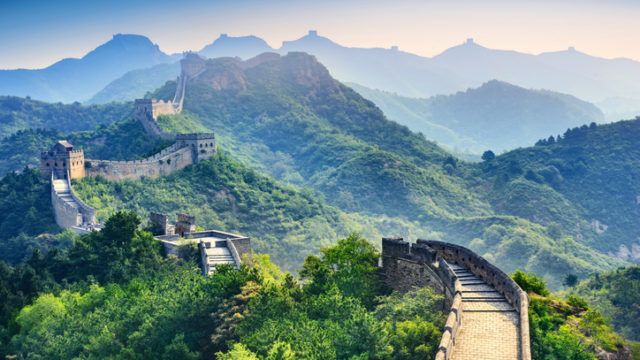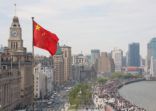The Chinese market has staged a significant recovery since the start of November, fuelled by hopes that the government would reverse the country’s damaging zero-Covid policy. But do investors need to be careful what they wish for? On the one hand, a loosening could unleash a crisis for the country’s immature health system. On the other, if Chinese growth revives, it could worsen the inflationary crisis for the rest of the world.
The SSE Composite index, which tracks stocks traded on the domestic Shanghai index, is up 10% since the start of November. The recovery in the Hong Kong-based Hang Seng has been even more remarkable, with the index up over 30%. The bounce comes after a miserable year for Chinese investors, where a weakening economy and fragile property sector have dented sentiment and pushed share prices lower.
The catalyst has been an apparent softening of the Chinese government’s stance on its zero-Covid policy. Some loosening of quarantine restrictions and contact tracing rules have been put in place alongside some clear indications from the government that it wants to open up the economy. As protests have erupted on the streets and economic data has weakened, it has also become increasingly clear that the costs of the ‘go slowly’ policy are rising.
Investors are clearly optimistic that this stance will relax further, leading to a recovery in the Chinese economy. This would be welcome for the world economy, with many other major economies likely to fall into recession in 2023, and also for the regional economy, much of which still depends on China as an engine of growth.
However, the equation is not straightforward. China’s zero-Covid policy was not simply the caprice of an authoritarian government, it was put in place because the healthcare system was not equipped to cope with a significant number of cases, vaccination rates were low and the vaccine itself was not particularly effective against new strains of Covid. Only around 40% of China’s over-80s have had the full two jabs and a booster. This is around half the rate for people in the UK and poses a fundamental risk for any reopening.
Sharukh Malik, portfolio manager, Asian and emerging markets at Guinness Global Investors, says if China were to open up completely all at once, a worst-case scenario could be as high as three million deaths: “This is why China has persisted with zero-Covid. Not enough elderly people are taking the vaccine.” There are a number of contributing factors for this – a reliance on traditional medicine, a lack of education by doctors and, possibly, a feeling of relative safety because Covid rates were low. Malik says that any progress on vaccinations, even with a weaker vaccine would enable some reopening “If all over-80s took the full three doses, potential deaths fall from three million to just 0.1 million.”
Vaccine mandates are one solution, but the government has been surprisingly hesitant. Nevertheless, he believes the government is likely to open up fully by 2023, given the increasing financial and social cost of the policy. The economic bounceback, when it comes, could be significant. He adds: “There has been a lot of savings accumulated over the past few years, as we saw in the UK. There could be a meaningful rise in consumption if the economy opens up. Equally, with interest rates increasing in developed markets, if China does open up, it could be the only major economy to grow next year. From an asset allocation point of view, China could be the bright spot.”
Sentiment could also move quite quickly, as has been seen from the strong rebound since the start of November. Valuations in Chinese stocks markets look very low and the region has been near-universally unpopular with investors. As such, even a small shift in sentiment could prompt a significant move in markets.
However, will a Chinese revival be good for the global economy? Gerrit Smit, manager of the Stonehage Fleming Global Best Ideas Equity fund, says: “Clearly, it is in everyone’s interest that China manages its restrictions better and the indications are that they are starting to do that. Otherwise, it’s going to be so harmful to their economy and we all know how dependent the rest of the world is on their exports. Their exports are collapsing at the moment, while the rest of the world’s imports are still growing. In 2023, in terms of those issues, we’ve got reason to believe it will be better.”
Nevertheless, there is a danger it could contribute to global inflationary pressures. Mark Preskett, senior portfolio manager at Morningstar Investment Management, says: “The biggest drivers of global inflation have been energy-related. China is the biggest consumer of natural gas, the biggest importer of natural gas. Its natural gas consumption has been falling this year for the first time in 20 years because the country has been in lockdown and demand is slowing, but we had situations in 2020 where they were trying to outbid the Europeans for gas. We are seeing gas prices falling markedly this year, but a strong China would need more gas.” He adds that the country could buy Russian gas, but that has only provided around 10% of its supplies historically.
Offsetting that, he says, supply chains would ease. This has also been inflationary, as supply has not been able to keep pace with demand. Preskett adds: “China’s lockdown has been a contributory factor to supply chain pressures.”
A lot will depend on the relative weakness of western economies. A Chinese revival, if it comes, may provide an important ballast against recessions in the UK, Europe and the US and may not contribute to inflation if demand is sufficiently weak elsewhere. However – as it has for much of 2022 – the world economy is walking a tightrope.
This story first appeared on our sister publication, Portfolio Adviser.
















